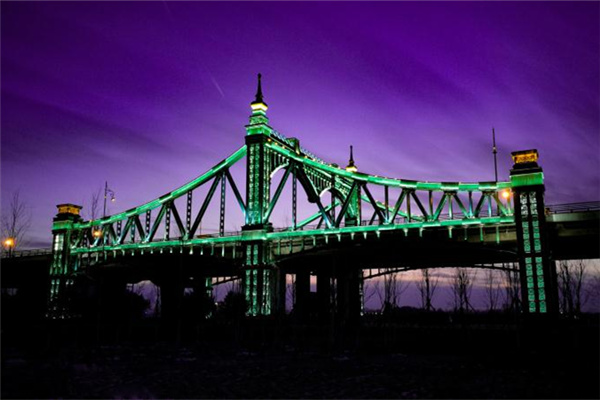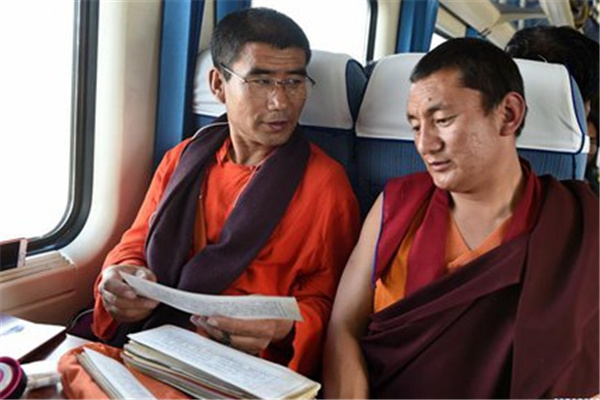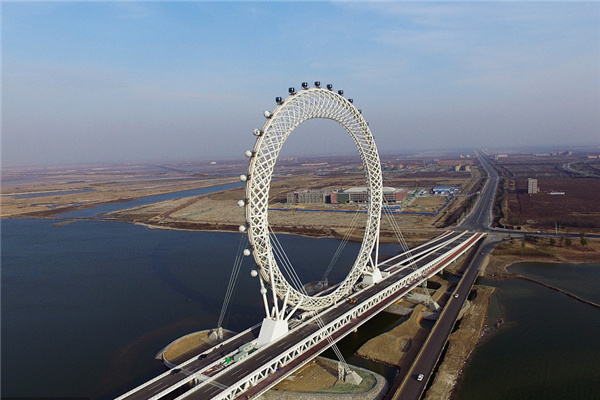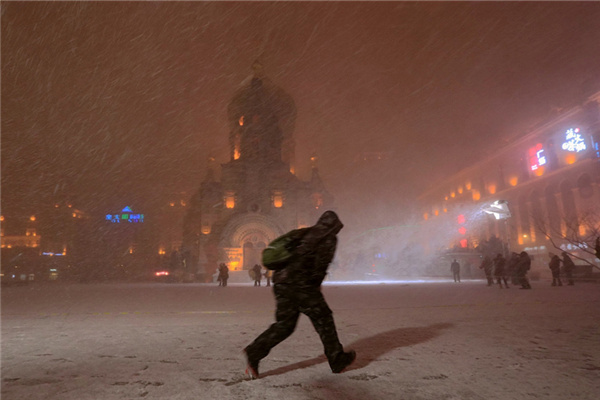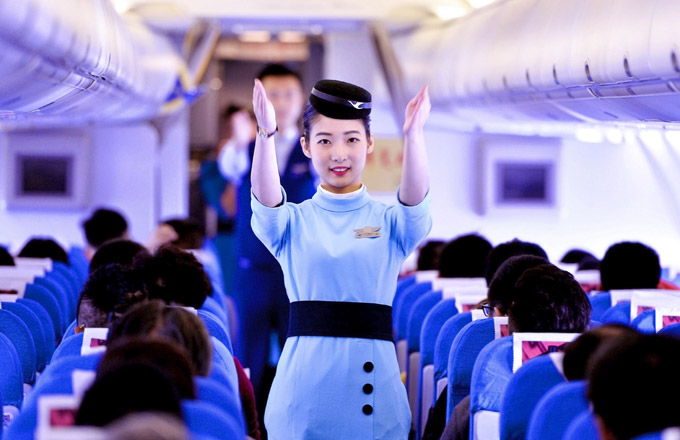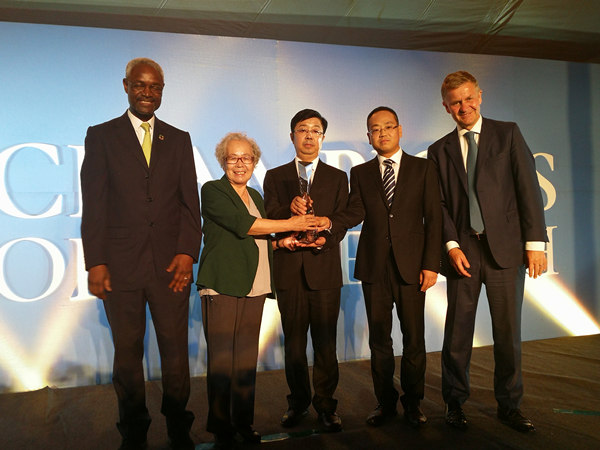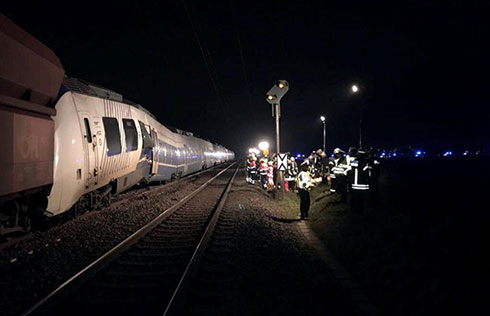

China Eastern Airlines hopes that good financial health early on can lead to great things later on. Fifteen months into its pivotal non-stop New York's JFK airport to Shanghai route, the airline's future looks bright with the Olympics this year and the Shanghai Expo in 2010 as potential benchmarks.

As crowds to China are predicted to increase tenfold, it's a given that Americans will tip the scales of Olympic-related travel. Sikai Zhang serves as China Eastern's general manager of US East Coast operations and is enthusiastic about the company's situation.
"We're very happy that Americans will go to China to see and participate in events. This is a great chance for all airlines that fly between our two countries," Zhang says.
Short-term optimism is the tip of the iceberg: China Eastern's plans are centered on the direct flight between New York and Shanghai; the financial capitals of the two countries, respectively. Encouraged by the Shanghai municipal government, China Eastern studied how many passengers travel between New York and Shanghai as final destinations. Zhang said the route's approval came after the airline gave the Chinese government a report on a "hub and spoke strategy" with Shanghai as one of the gateways to Asia.
China Eastern's longest aviation route came in good time. Next month Delta begins their nonstop route from Atlanta, Georgia to Shanghai, and in March 2009 several other new routes will begin, including Continental's potential for seven non-stops from New York each day - a direct threat to China Eastern.
But China Eastern has a capable pilot driving the New York operation. After nonstop service from London to Shanghai began in 2004, the airline decided to put a network in place in New York about six months before the direct flight from JFK to Shanghai began in December 2006.
Zhang was China Eastern's pioneer for that move. He's been with the company for 26 years, moving from the commercial side to marketing and sales before being stationed in Japan twice. He was CE's commercial sales manager in Tokyo from 1989 to 1995, then general manager in Osaka from 2000 to 2003.
After being sent to New York in June 2006 to set up the new office, Zhang found difficulties such as a two-week wait for an Internet connection as well as dealing with banks or getting a cellphone as a person who had no US credit history.
"I think that my successor will enjoy much more than I did." Zhang says, with half a smile.
The turbulent beginning has eased. As the one-year anniversary of the inaugural flight passed, Zhang says traffic and progress are great.
"We calculated that the performance was very healthy. The market is very good because the route had the shortest time period of market cultivation - we started on December 8 and [were profitable] around June 2007. It's very in-demand" Zhang says.
The strategy revolves around business travel as the bread and butter to sell seats. Zhang says the flight consists mainly of corporate types, small business owners, middle managers as well as students or relatives going on visits.
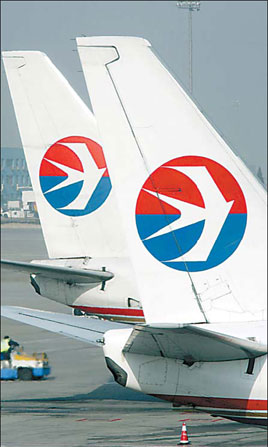
The flight takes off at 1 am Eastern time in New York and arrives around 5 am the next day in Shanghai. This allows for business travelers to start the day early in Shanghai and for what Zhang calls "seamless connections" between the flight and other Asian cities. He described it is as having a flight waiting for you once you arrive.
"Passengers from New York can go to destinations beyond Shanghai conveniently. It's a coordinated effort specifically designed for them to go to an APEC region, like Singapore or Bangkok, Malaysia, India and anywhere within China," he says.
Total flying time of the 12,800 km trip totals between 13 and a half and 15 hours, depending on whether there's tailwind or heading against the wind. Travelers cross the North Pole heading to China but not on the return flight, which departs in the afternoon from Pudong airport and brings them back to New York the same day due to time difference.
When the president of China Eastern visited America last year - in both June and November - Zhang accompanied him to visit the Boeing aircraft manufacturing plant where they attempted to secure an early slot for the new 787 Dreamliner.
Originally China Eastern expected to have 787's by the start of this year but two postponements have them arriving around the end of 2008, much to China Eastern's dismay as those planes will be eventually assigned to fly the New York to Shanghai route.
Currently China Eastern uses the A340-600 series aircraft, which holds 320 passengers and is the longest plane in the world. According to Boeing the 787 Dreamliner will bring big-jet ranges to a mid-size airplane while providing unmatched fuel efficiency. Boeing.com states the 787 will use 20 percent less fuel per trip, giving airlines more cargo revenue capacity.
With selling points to boot and a great deal of expected traffic, CE has the right to be optimistic. Still, China Eastern isn't a household name in China, and Zhang says around 70 percent of its travelers are ethnic Chinese.
"Awareness is quite limited. They don't know what your company is, what your product is. Only with lots of marketing and by word of mouth can they know," he says.
Word of mouth is crucial, and it looks as if China Eastern will give travelers lots to talk about.
(China Daily 03/17/2008 page6)
